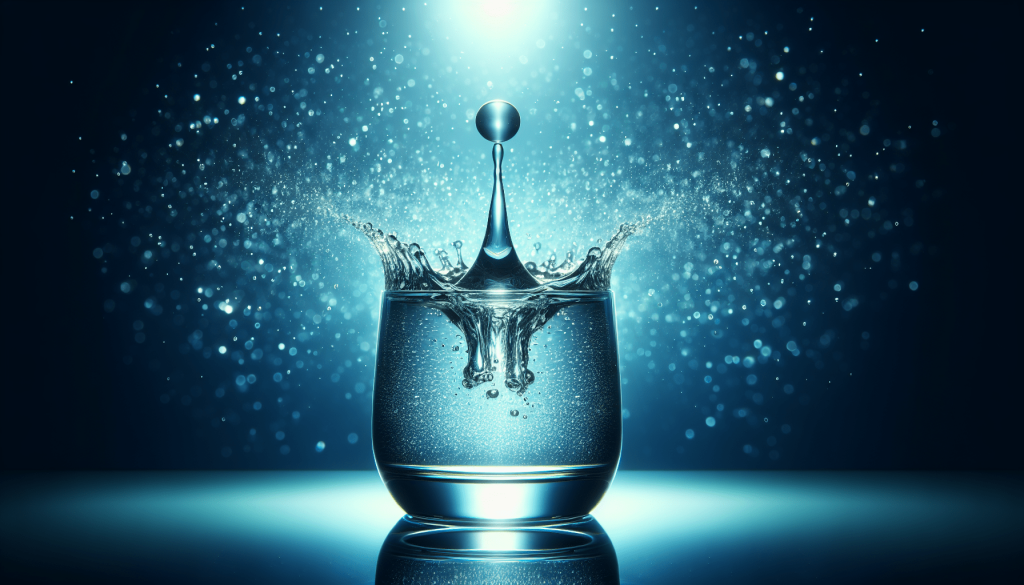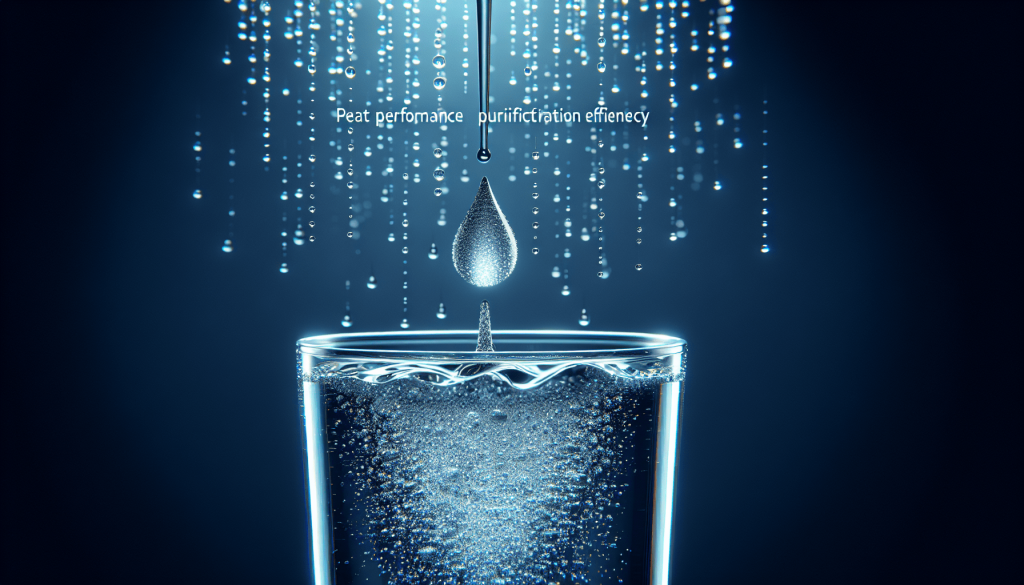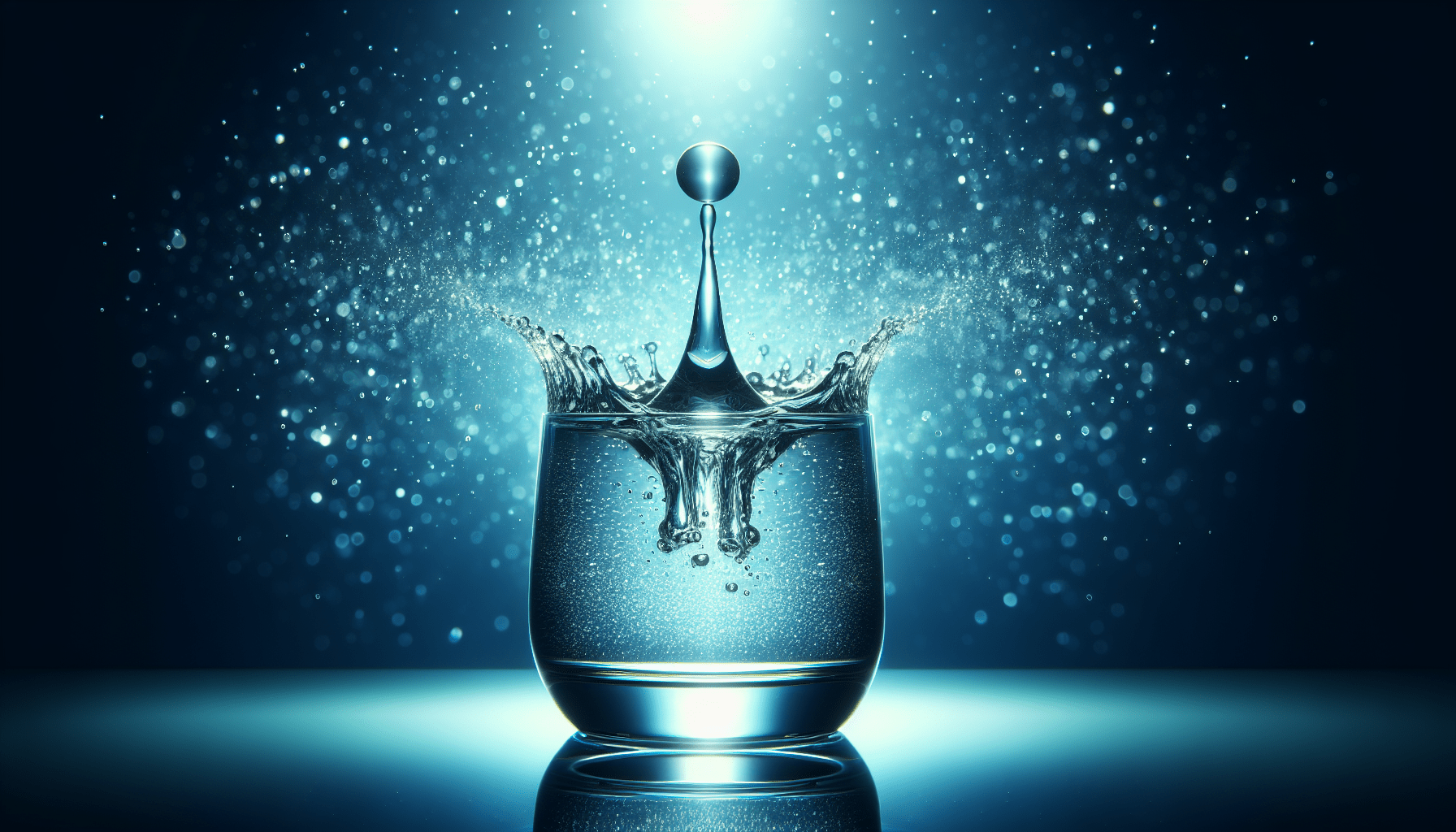Are you curious about the best way to purify water? Look no further! This article aims to shed light on the most efficient method of water purification. Whether you’re planning a camping trip or simply want to ensure clean drinking water at home, finding the most effective purification method is crucial. So, let’s explore the various techniques and discover the answer together.
Distillation
Process of Distillation
Distillation is a method of water purification that involves the process of separating impurities and contaminants from water through the use of heat. This process relies on the principles of evaporation and condensation. When water is heated, it vaporizes, leaving behind impurities. The vapor is then collected and cooled, causing it to condense back into liquid form, resulting in purified water.
Efficiency of Distillation
Distillation is considered to be one of the most efficient methods of water purification. It is capable of removing a wide range of contaminants, including heavy metals, chemicals, bacteria, and viruses. The high temperatures involved in the process kill most microorganisms, making it an effective method for ensuring safe drinking water.
Advantages of Distillation
One of the key advantages of distillation is its ability to produce water that is free from impurities. As the process involves the separation of contaminants, the resulting water is generally of high purity. Additionally, distillation is a versatile method that can be used to treat various sources of water, such as seawater or contaminated groundwater.
Disadvantages of Distillation
While distillation is highly effective in purifying water, it does have some disadvantages. One of the main drawbacks is its energy-intensive nature. The process requires heating a large amount of water, which can be costly and time-consuming. Distillation also removes essential minerals from the water, resulting in demineralized water that may not be as beneficial for consumption.
Reverse Osmosis
How Reverse Osmosis Works
Reverse osmosis (RO) is a water purification method that utilizes a semipermeable membrane to remove impurities from water. In this process, pressure is applied to the water, forcing it through the membrane, while filtering out contaminants. The membrane allows only water molecules to pass through, while larger molecules and impurities are left behind.
Efficiency of Reverse Osmosis
Reverse osmosis is known for its high efficiency in removing a wide range of impurities, including bacteria, viruses, dissolved solids, and chemicals. It can effectively eliminate up to 99% of contaminants present in the water, ensuring clean and safe drinking water.
Advantages of Reverse Osmosis
One of the major advantages of reverse osmosis is its ability to produce pure and high-quality drinking water. The process eliminates almost all impurities, ensuring that the water is safe for consumption. Additionally, reverse osmosis systems are compact and can easily be installed in homes or offices, making it a convenient method of water purification.
Disadvantages of Reverse Osmosis
While reverse osmosis is highly efficient, it does have some disadvantages. The process requires a significant amount of water pressure, which may require the use of a pump. This can increase energy consumption and costs. Additionally, reverse osmosis removes essential minerals from the water, resulting in demineralized water that may need to be remineralized for optimal health benefits.

UV Water Purification
Working Principle of UV Water Purification
UV water purification employs ultraviolet light to eliminate bacteria, viruses, and other microorganisms present in water. This method works by exposing water to UV light, which damages the DNA of microorganisms, rendering them unable to reproduce and causing them to be effectively deactivated.
Efficiency of UV Water Purification
UV water purification is highly efficient in eliminating bacteria, viruses, and other harmful microorganisms. It has been proven to achieve up to a 99.99% reduction in pathogens, making it an effective method for producing safe drinking water.
Advantages of UV Water Purification
One of the major advantages of UV water purification is its ability to kill a wide range of microorganisms without the use of chemicals. UV treatment is free from chemical byproducts and does not alter the taste, odor, or pH of the water. It is also a quick and reliable method, as the treatment process typically takes only seconds.
Disadvantages of UV Water Purification
While UV water purification is highly effective against microorganisms, it does have limitations. It does not remove chemical pollutants, dissolved solids, or other non-living contaminants. Additionally, UV treatment requires a power source, making it less suitable for situations where electricity is not readily available.
Activated Carbon Filtration
How Activated Carbon Filtration Works
Activated carbon filtration utilizes a porous material called activated carbon to remove impurities from water. The activated carbon has a large surface area with numerous microscopic pores that adsorb and trap contaminants present in the water. As the water passes through the carbon filter, impurities adhere to the carbon surface, leaving behind purified water.
Efficiency of Activated Carbon Filtration
Activated carbon filtration is highly efficient in removing organic compounds, chlorine, certain chemicals, and unpleasant odors and tastes from water. It can effectively improve the overall quality and taste of the water by adsorbing and reducing a wide range of impurities.
Advantages of Activated Carbon Filtration
One of the major advantages of activated carbon filtration is its ability to enhance the taste and odor of water. The porous structure of activated carbon traps and removes unpleasant smells and tastes, providing better-tasting water. Additionally, activated carbon filters are relatively inexpensive and easy to maintain.
Disadvantages of Activated Carbon Filtration
While activated carbon filtration is effective in removing many contaminants, it has limitations. This method does not effectively remove inorganic compounds, such as heavy metals or dissolved minerals. It may also require regular filter replacements or regeneration to maintain its effectiveness.

Chlorination
Process of Chlorination
Chlorination is a commonly used method of water disinfection that involves the addition of chlorine or chlorine compounds to water. The chlorine reacts with organic matter and microorganisms, effectively killing bacteria, viruses, and other pathogens present in the water.
Efficiency of Chlorination
Chlorination is highly efficient in destroying most bacteria and viruses present in water. It is a widely used method of water disinfection due to its effectiveness in preventing waterborne diseases.
Advantages of Chlorination
One of the major advantages of chlorination is its ability to provide a residual disinfectant effect. Chlorine remains in the water even after treatment, providing ongoing protection against recontamination. It is also a cost-effective method that can be easily implemented on a large scale.
Disadvantages of Chlorination
Despite its effectiveness, chlorination does have some disadvantages. Chlorine reacts with organic matter to form potentially harmful disinfection byproducts, such as trihalomethanes. These byproducts may have adverse health effects when consumed over a prolonged period. Additionally, some microorganisms, such as Cryptosporidium, are resistant to chlorine, requiring additional treatment methods.
Ozone Water Treatment
How Ozone Water Treatment Works
Ozone water treatment is a process that utilizes ozone, a powerful oxidizing agent, to disinfect and purify water. Ozone is produced by passing oxygen through an electrical discharge, resulting in the conversion of oxygen molecules (O2) to ozone molecules (O3). The ozone is then injected into the water, where it reacts with organic matter, bacteria, and other contaminants, effectively neutralizing them.
Efficiency of Ozone Water Treatment
Ozone water treatment is highly efficient in destroying bacteria, viruses, and other microorganisms present in water. It is considered to be one of the strongest disinfectants available and can eliminate a wide range of pathogens. Ozone treatment also breaks down certain chemical compounds, reducing their presence in the water.
Advantages of Ozone Water Treatment
One of the major advantages of ozone water treatment is its effectiveness against a broad spectrum of microorganisms. Ozone is capable of inactivating bacteria, viruses, parasites, and even drug-resistant microorganisms, making it an excellent method for water disinfection. Additionally, ozone does not leave behind harmful disinfection byproducts, addressing concerns associated with chemical disinfection methods.
Disadvantages of Ozone Water Treatment
While ozone water treatment is highly efficient, it does have some disadvantages. Ozone generators are expensive and require proper maintenance and monitoring. Ozone is also a powerful oxidant, which may lead to the degradation of certain materials, such as rubber or plastic components in water treatment systems. Moreover, ozone has a short half-life, requiring continuous injection or generation to maintain its effectiveness.

Ceramic Filters
Working Principle of Ceramic Filters
Ceramic filters are porous ceramic materials that act as a physical barrier to remove impurities from water. The microscopic pores in the ceramic allow water molecules to pass through, while trapping contaminants and bacteria. These filters can be impregnated with silver, which helps to inhibit bacterial growth.
Efficiency of Ceramic Filters
Ceramic filters are highly efficient in removing bacteria, protozoa, suspended solids, and fine particles from water. The small pore size of the ceramic material ensures that even the tiniest impurities are effectively trapped, resulting in clean and safe drinking water.
Advantages of Ceramic Filters
One of the major advantages of ceramic filters is their long lifespan and reusability. With proper maintenance and cleaning, ceramic filters can last for an extended period, making them a cost-effective option. They are also easy to use, require no electricity, and can be readily installed in households or in remote areas with limited infrastructure.
Disadvantages of Ceramic Filters
While ceramic filters are effective in removing many impurities, they may not effectively remove certain chemicals, dissolved minerals, or viruses. The flow rate of water through ceramic filters can also be slow, requiring patients to collect water. Regular cleaning and maintenance are essential to prevent the buildup of contaminants on the ceramic surface.
Electrodialysis
Process of Electrodialysis
Electrodialysis is a water purification method that relies on the use of an electric field to separate ions from water. The process involves the use of a selectively permeable membrane, which allows certain ions to pass through, while blocking others. By applying an electric current, positive ions migrate towards the negative electrode, while negative ions are attracted to the positive electrode, effectively removing ions from water.
Efficiency of Electrodialysis
Electrodialysis is known for its efficiency in removing mineral ions, salts, and other dissolved solids from water. It can significantly reduce the concentration of total dissolved solids (TDS) and is widely used in desalination processes to produce freshwater from seawater.
Advantages of Electrodialysis
One of the major advantages of electrodialysis is its ability to remove specific ions from water, allowing for selective purification. It is effective in desalting water and can be used to target specific contaminants depending on the membrane selection. Electrodialysis systems also require less energy compared to other desalination methods like reverse osmosis.
Disadvantages of Electrodialysis
While electrodialysis offers efficient desalination capabilities, it does have some disadvantages. The process requires a stable power supply to maintain the electric current, increasing energy consumption. Electrodialysis membranes are also susceptible to fouling, which can reduce their efficiency and require regular maintenance. Additionally, the initial cost of electrodialysis systems can be high, making it less accessible for some applications.

Chemical Disinfection
Methods of Chemical Disinfection
Chemical disinfection involves the use of various chemicals to kill or inactivate microorganisms present in water. Common methods of chemical disinfection include the use of chlorine compounds (such as sodium hypochlorite), chlorine dioxide, or ozone. These chemicals are added to water in specific dosages to achieve effective disinfection.
Efficiency of Chemical Disinfection
Chemical disinfection methods are highly efficient in killing bacteria, viruses, and other microorganisms. When used correctly and in appropriate dosages, they can provide a high level of disinfection efficacy and protect against waterborne diseases.
Advantages of Chemical Disinfection
One of the major advantages of chemical disinfection is its widespread use and availability. Chemical disinfectants are relatively easy to obtain and can be used on a large scale in water treatment facilities. They also provide residual disinfection effects, which can help maintain the safety of water during its distribution.
Disadvantages of Chemical Disinfection
While chemical disinfection methods are effective, they do have some disadvantages. Some disinfectants, such as chlorine compounds, can react with organic matter to form disinfection byproducts that may have adverse health effects. Additionally, certain microorganisms, such as Cryptosporidium, are resistant to some chemical disinfectants, requiring additional treatment methods. Regular monitoring and control of chemical dosages are necessary to ensure the safety and efficacy of chemical disinfection.
Membrane Filtration
Types of Membrane Filtration
Membrane filtration refers to a group of water purification methods that use a semipermeable membrane to separate impurities from water. There are different types of membrane filtration, including microfiltration, ultrafiltration, nanofiltration, and reverse osmosis. Each type of membrane has different pore sizes, allowing for the removal of specific impurities based on their size.
Efficiency of Membrane Filtration
Membrane filtration is highly efficient in removing a range of impurities, depending on the type of membrane used. Microfiltration and ultrafiltration are effective in removing larger particles, bacteria, and protozoa, while nanofiltration and reverse osmosis can remove smaller molecules, dissolved solids, and even some viruses.
Advantages of Membrane Filtration
One of the major advantages of membrane filtration is its versatility and ability to target specific contaminants. Different types of membranes can be used in combination to achieve the desired level of water purification. Membrane filtration is also efficient in removing impurities without the need for chemicals, making it a popular method for producing clean and safe drinking water.
Disadvantages of Membrane Filtration
While membrane filtration is highly effective, it does have some limitations. The process requires a stable pressure differential across the membrane, which may result in energy consumption. Membranes can also be susceptible to fouling and require regular cleaning or replacement. Additionally, the initial cost of membrane filtration systems can be high, making them less accessible for certain applications.
In conclusion, there are several efficient methods of water purification available, each with their own advantages and disadvantages. Distillation, reverse osmosis, UV water purification, activated carbon filtration, chlorination, ozone water treatment, ceramic filters, electrodialysis, chemical disinfection, and membrane filtration are all effective in removing impurities and providing safe drinking water. The choice of method depends on various factors, including the specific contaminants present, cost-effectiveness, availability of resources, and the desired level of purification. By understanding the different methods, their efficiency, and their pros and cons, you can make an informed decision and ensure access to clean and potable water.



